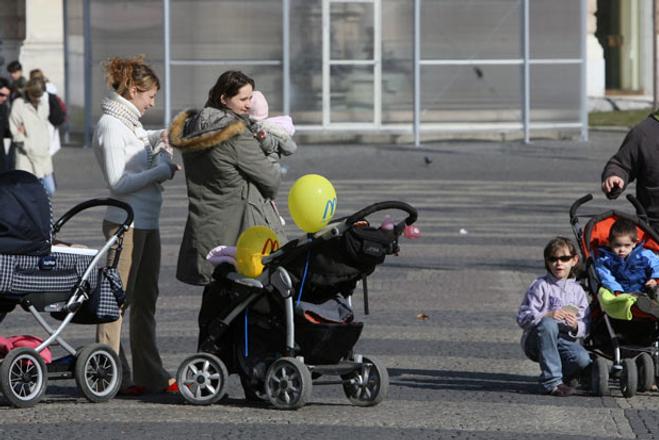THE NUMBER of Slovaks who live on the verge of poverty has been dropping recently, but children, the unemployed and single-parent families remain vulnerable to deprivation; for these groups poverty is now, on average, more of a threat. Regional disparities in the numbers at risk of poverty also exist.
10.7 percent of Slovaks were threatened by poverty in 2006, a 0.9 percent decline year-on-year, and a fall of 2.6 percent compared to 2004, according to the EU Survey on Income and Living Conditions (EU SILC 2007) published by the Slovak Statistics Office in early June.
People whose monthly income is below Sk7,679 are at greatest risk of falling into poverty. People are deemed to be at risk of poverty if their income is below 60 percent of the median, the Slovak Statistics Office reported.
The long-term unemployed, children under the age of 15 and single-parent families with one or more dependants, along with two-parent families with more than three dependants, are the most vulnerable to poverty, Barbora Petrová of the Labour Ministry's press department told The Slovak Spectator.
According to the EU SILC 2007, the unemployed made up 44 percent of people endangered by poverty, while single-parent families represented 27 percent. Families with three or more children made up 25 percent of those threatened by poverty and children under 15 made up 15.6 percent.
The average monthly disposable income of households in 2006 in Slovakia per person was Sk14,096, compared to Sk11,762 in 2005 and Sk10,115 in 2004, the Slovak Statistics Office reported. This figure masked regional disparities, with the highest average monthly income being recorded in the Bratislava Region, at Sk18,567, while the Prešov Region reported the lowest monthly disposable income, at Sk12,389.
Slovakia aspires to make considerable progress in reducing poverty by 2010 in the way defined by the Lisbon Strategy shared by EU members, said Petrová.
Policies to ease poverty range from direct financial transfers, such as financial assistance to increase income, social subsidies and alimonies, to the reduction of expenses, for example via school subsidies for children, social services, social-legal protection of children and other specific social programmes, Petrová said.
Sociologist Zuzana Kusá, who has been studying the phenomenon of poverty, finds the number of low-income people disturbing and says that the level of social protection has been declining.
Neither the state nor local government has funds to offer services to the poor; that is, services that would help them to develop their abilities and climb out of poverty, Kusá told The Slovak Spectator.
"Instead of the expression 'poor' or 'insolvent' there is a tendency to use the expression 'unadaptable'," Kusá said.
Referring to the EU SILC 2007 survey, Kusá said that the financial measure used to determine the level of poverty is decisive since it is an indicator that the European Union politically agreed to use.
Social scientists studying poverty acknowledge that measuring poverty based on income is important as an indicator of disparities, since in a society with huge disparities the risk of mass tensions increases and societal trust declines, said Kusá.
"The monetary poverty indicator is based on the experience that such low incomes make it impossible to live the kind of life which, in each given society, is considered decent," Kusá added. "But it is only an estimate."
In many societies where wealth is very unevenly distributed, and only a very small percentage of the population live well, a low quality of living standards can also affect those close to the median income, according to Kusá.
For example, in 2007 housing expenses "did not burden at all" only 7.9 percent of Slovakia's population but "considerably burdened" 36 percent of those surveyed. This share is more than three times higher than the 10.7 percent portion deemed to be at risk of poverty according to income measures, said Kusá.
Some countries also define a so-called existential minimum, which is the sum needed to pay for a range of basic goods and services needed to live a "normal" life. People whose income falls short of this sum are considered at threat of poverty. This 'life minimum' is used as the national poverty threshold, the sociologist said.
Currently there are Europe-wide initiatives to set a minimal income for all citizens.
In Slovakia the definition and understanding of poverty has changed in the last two decades. After 1989, poverty was understood as a violation of people's right to a dignified life; between 1991 and 1998 the life minimum worked as a guaranteed minimum income for those who did not have other sources of income, Kusá explained.
"Later, British models started to influence the area of social policy, along with the rhetoric of personal responsibility, according to which economic growth and increasing people's motivation to work began to be seen as sufficient medicine against poverty," Kusá told The Slovak Spectator.
After 1999 and especially 2002, social benefits were trimmed and subsidies for families with many children were intentionally cut, which explains the high level of financial poverty among children, Kusá explained.
During the reform era, guaranteed incomes have dropped while people dependent on social benefits have got further from the national social median standard. For example, in 2007 the threat of poverty deepened in the Prešov Region.
Although, since 2004, some programmes have been started for children from poor families - for example to provide food at school, as well as school supplies and scholarships - this remains at the level of basic subsistence help, and not development assistance, Kusá said.



 Single-parent families, children under 15 and the unemployed remain most vulnerable to poverty. (source: Sme - Pavol Funtál)
Single-parent families, children under 15 and the unemployed remain most vulnerable to poverty. (source: Sme - Pavol Funtál)